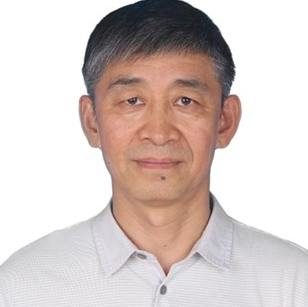Zhiliang Ma
Doctor of Engineering, Professor
(Department of Civil Engineering, Tsinghua University, Beijing, China)
 He obtained Bachelor Degree in 1986 at Department of Civil Engineering of Tsinghua University, China and his Doctor Degree in 1992 at Department of Civil Engineering of Nagoya University, Japan. He became a full Professor in 2003 at Tsinghua University.
He obtained Bachelor Degree in 1986 at Department of Civil Engineering of Tsinghua University, China and his Doctor Degree in 1992 at Department of Civil Engineering of Nagoya University, Japan. He became a full Professor in 2003 at Tsinghua University.
His major research interests are on the application of information technology in civil engineering. He has been the principal investigator of more than 60 research projects. He has published 21 books and more than 200 papers. As a key member, he took part in the writing of policy documents on applying information technology in construction industry for the central government of China. As the executive editor-in-chief, he organized the writing of and published ten subsequent special industrial reports on the application of information technology in building construction field, one report for a specific topic every year.
He serves as the chairperson of Specialty Committee on Building Information Modeling, China Graphics Society; and the chairperson of Informatization Expert Committee, China Association of Construction Firms’ Management. He acts as the member of Green Construction Sub-Committee, Science and Technology Committee, China Ministry of Housing and Urban-Rural Development. He also serves as the associate editor of the renowned international journal ‘Automation in Construction’.
OSpecialization of Generative LLMs for Application in Construction: Taking Named Entity Recognition as Example
Since 2023, generative LLMs (Large Language Models) represented by GPT-4 (Generative Pre-training Transformer-4), have shown impressive performance. However, it needs to be specialized to be applied satisfactorily in special fields, such as construction. The authors have been exploring the methods for the specialization in construction. This presentation analyzes the requirement for the specialization and introduces a method that we developed based on fine-tuning of LLMs for NER (Named Entity Recognition) of construction documents as an example. In traditional methods of NER, machine learning has been used, but they rely on large high-quality datasets that are manually made, which is costly to obtain in construction. To solve the problem, a method for NER based on fine-tuning of LLMs is developed for information extraction of construction documents. Firstly, low-quality datasets are semi-automatically generated from national standards, professional qualification textbooks, input method editor lexicons, including a generation-type dataset, a tagging-type dataset, and a question-answering dataset. Then, the above datasets are used to fine-tune an LLM for NER of structural elements to obtain optimal parametric conditions for fine-tuning. Finally, the optimal conditions are used to fine-tune the LLM and the latter was evaluated based on an established dataset and evaluation rules. The accuracy and completeness of the method are significantly improved compared to the LLM before fine-tuning, proving that the method works well. The method showcases the way to obtain a method for the specialization of LLMs for its application in construction.

How to prepare my poster?
Read this page to learn what type and size are the best to be displayed at postertable.

